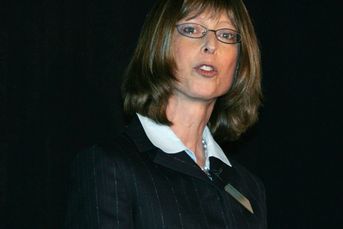Corporate earnings will eclipse expectations, optimists contend
Forget the “new normal” of lower profit growth. Many market watchers expect corporate profits to surpass even…
Forget the “new normal” of lower profit growth.
Many market watchers expect corporate profits to surpass even the present rosy expectations, due to aggressive expense control and improved demand.
This optimism stands in contrast to the view of those who think that earnings gains will be hard to come by in a slow-growth environment. Bears feel that the run-up since March has resulted in stock overvaluations because the prices won’t be supported by earnings.
But if estimates hold up, stocks look to be about fairly valued.
Analysts with Standard & Poor’s Financial Services LLC estimate a 34.9% surge in operating earnings of the S&P 500 companies next year.
Those estimates work out to a price-earnings ratio for the S&P 500 of about 15 for next year, about in line with historical averages, said Howard Silverblatt, senior index analyst at S&P.
“The surprise of 2010 is that profits will do better than people are thinking,” said Jim Swanson, chief investment strategist with MFS Investment Management, who thinks that “dramatic” cost cutting and pent-up consumer demand will create earnings surprises.
Of the companies in the S&P 500, 125 have exceeded their prior peak profits, according to MFS, while only 80 have reached their previous price peaks.
“We’re likely to see a V-shaped recovery in earnings even if U.S. growth remains subpar,” said Ed Yardeni, president and chief investment strategist at Yardeni Research Inc.
Forty percent profit growth for the S&P 500 next year is realistic, he said.
“You get the biggest earnings pop coming out of a recession,” Mr. Yardeni said. That is because companies cut costs, improve their margins and then get significant bottom-line benefits from increased sales as demand improves.
The earnings recovery “seems to be playing out in the same old cyclical fashion” seen in other recoveries, Mr. Yardeni said.
Sure enough, reported profit margins have been coming in much higher, and analysts are “still looking for higher margins going forward,” Mr. Silverblatt said.
Profit margins overall are forecast to be more than 7% next year for the S&P 500 stocks, he said, versus a historical average of just less than 6%.
BEYOND CUTS
Severe cost cutting has clearly helped profit margins, and the bulls think that corporate managers can maintain that lower cost structure.
Cost cutting has “certainly been dramatic in the U.S. — more here than elsewhere,” Mr. Swanson said.
Wage increases are unlikely, contends Reed Halladay, managing partner at Bel Air Investment Advisors LLC, which manages $5 billion.
“There’s excess supply [of labor],” he said. Workers are “not in a position to negotiate” for higher wages.
“But it’s not just labor,” Mr. Swanson said. “Only 22% of cost cuts are [reductions in] labor.”
With capacity utilization running at just 70%, there’s room for expansion without driving up production costs, Mr. Halladay added.
Although some worry about revenue growth, Mr. Swanson doesn’t.
For one thing, there is a large amount of pent-up demand for housing, he said.
And with the housing affordability ratio back down to its 30-year average, Mr. Swanson estimated that 5 million households will be ready to buy in the near term.
Meanwhile, the American public is driving the oldest cars on record — nine-and-a-half years old — Mr. Swanson said, while the cost of a car is now at a record-low average of 21.6 weeks of pay.
“These things to me suggest there’s going to be top-line growth,” he said.
Meanwhile, foreign sales are making a positive difference for some companies.
“Firms in the S&P 500 index get 48.9% of their sales from abroad,” Mr. Silverblatt said.
“Corporate managements get paid to generate revenue growth. If they can’t find it in the U.S. or traditional [developed] markets, they’ll go to emerging markets, where growth is much faster,” Mr. Yardeni said.
“We’ve never had that kind of support before” from emerging markets coming out of a recession, Mr. Halladay said.
NO V HERE
Of course, there is plenty that can go wrong with the rosy scenario.
“Everything has to come into play” and go right for corporate profits to meet expectations, Mr. Silverblatt said.
In an October research note, William Hester, a senior financial analyst at the Hussman Econometrics Advisors Inc., questioned the credibility of earnings estimates on U.S. stocks and cautioned against believing the most buoyant estimates.
“A full-blown V-shaped [earnings] recovery is being priced” into stocks, he wrote, with analysts assuming earnings growth of more than 40% next year and another 22% in 2011, taking profits back to record levels reached in 2007.
If those profit estimates come up short, the market could get hammered, Mr. Halladay said.
“We’ve moved through the [typical] P/E expansion phase” of a recovery, “and now we’re into the earnings growth phase,” where further advances rely on profit growth, he said.
Continued deleveraging, high unemployment and lack of consumer confidence are seen as the major risks.
But while the gross domestic product fell 3.8% from peak to trough, consumer spending fell only 1.8%, Mr. Swanson said.
“Some say the consumer is dead,” Mr. Swanson said. “I say they never left the building — Elvis is still here.”
E-mail Dan Jamieson at djamieson@investmentnews.
Learn more about reprints and licensing for this article.





